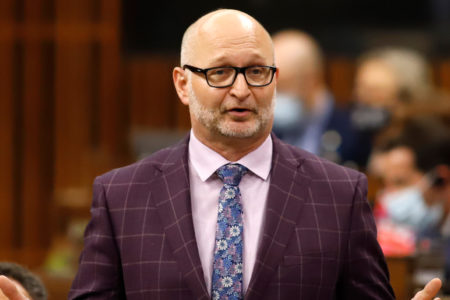
Governments around the world are taking their data holdings — think maps and spreadsheets — and making them available for anyone to freely use, share and modify. This shift to “open data” is improving government, empowering citizens, creating business opportunities and solving public problems, according to New York University’s Governance Lab. Leading governments now require all of their data to be made available, or “open by default,” unless there is a compelling privacy or security reason to withhold something. So, how is Canada faring on open data?
Seventh in the world, according to the World Wide Web Foundation. The federal government first launched its open data portal in 2011. Since then, it has released more than 240,000 data sets online, joined the global Open Government Partnership and contributed to the creation of the International Open Data Charter. This is largely thanks to two small teams within the Treasury Board Secretariat, who have started building a strong open data and open information program.
However, Canadians have been promised a “higher bar for openness and transparency” by the new federal government. During the election, the Liberal Party campaigned to “accelerate and expand open data initiatives,” and the mandate letters for new ministers reiterated the pledge to make federal information open by default. Although the previous government had already committed to implementing this measure by 2020, their successors want to accelerate the pace.
The Canadian Open Dialogue Forum, taking place in Ottawa this week, will emphasize the benefits of establishing a freer flow of information between governments and the public.
If Canada wants to become the world leader in open data and open information, here are six steps the federal government should consider.
First, promptly release inventories of the data and information held by the government, and then track progress in opening up those holdings. Canada’s Directive on Open Government requires that all information of value be inventoried by 2020, but this must happen sooner. Knowing how data are distributed across departments enables an appropriate allocation of resources when transitioning from closed to open by default. Inventories are also needed to measure the government’s progress during this transition, and they can be used to engage Canadians in deciding which data sets to release first.
Second, prioritize the release of data and information that benefits civil society. Transparency advocates often focus on the “gotcha” value of open data and information. Although keeping track of a $16 glass of orange juice and Senate expenses is important, it doesn’t enable transformative change. Nonprofit and community organizations need good data to plan and deliver services that Canadians rely on — from housing and social services to legal aid and environmental protection. We know how useful census data are to them, and there’s much more potential to use government data for social good.
Identifying key data requires more robust consultation. The Smart Chicago Collaborative, for example, uses open data to help residents improve their health, compare early learning programs and get accessible directions for people with disabilities. The group convenes and partners with the organizations that serve Chicagoans — including libraries, shelters and chambers of commerce — to identify which data are needed to make a positive impact.
So far, Canada’s approach to open data has involved limited consultation that is more demand-based than needs-based. This kind of consultation engages data experts and businesses that can profit from free access to government data, but leaves out most Canadians, who may not think of themselves as data users.
As a third step, proactively disclose the responses to nonpersonal access to information (ATI) requests. Every year, the federal government responds to more than 60,000 ATI requests and discloses more than 5 million pages. But these records are valuable not only to the requester; others could also benefit from the information they contain.
In Britain, WhatDoTheyKnow.com publishes responses to these kinds of requests online. The average document is viewed by 20 people, and some are viewed by up to 80,000 people. In Canada, on the other hand, anyone who wants to see a record disclosed under ATI must re-request it manually.
This is a simple change to make. These records are ready to be released to the public, since they have already been reviewed for privacy and security concerns. In fact, it’s already a standard practice for the provincial governments of British Columbia and Newfoundland and Labrador, as well as the United States under the Release to One, Release to All policy.
The fourth step must be to clarify how the Official Languages Act interacts with being open by default. The Directive on Open Government requires that all information and data of business value be made available to the public, but not all government business is conducted in both official languages. In fact, most of the federal government’s information and data is monolingual. Clarifying in what circumstances information must be translated before being released will eliminate uncertainty among civil servants about how to comply with both policies.
Fifth, consider a government-wide waiver of Crown copyright. If “data paid for by Canadians belongs to Canadians,” as the government has said, then Canadians should by default have the right to copy, modify and distribute these data without restriction. Establishing this legal norm will further accelerate the transition to open by default, as all information and data would be “born” open.
Finally, the sixth step: give each department the financial, human and political resources needed to transition from closed to open by default. The resources for open government are currently concentrated in the Treasury Board Secretariat. For most civil servants in other departments, open government adds “additional work with no additional resources,” according to Mary Francoli’s independent assessment of Canada’s action plan for the Open Government Partnership. The investment needed is relatively modest but necessary if the government wants to see substantial benefits from open data.
McKinsey estimates that $3 trillion in economic value could be unlocked by open data globally — not to mention the social benefits to Canadians. We’re missing out on that potential because the cost of collecting and accessing data is often prohibitive. That creates significant barriers to innovation by the private sector and makes it harder for civil society to understand and address the social challenges we face.
The federal government can drive down those costs by making all of its information and data open. There will be challenges along the way, including the need for a “cultural shift” in parts of the public service. However, Canada has already built the foundations of a robust open data program. Now we have an opportunity to move from seventh in the world to first, and to unlock information that will benefit and empower Canadians.







